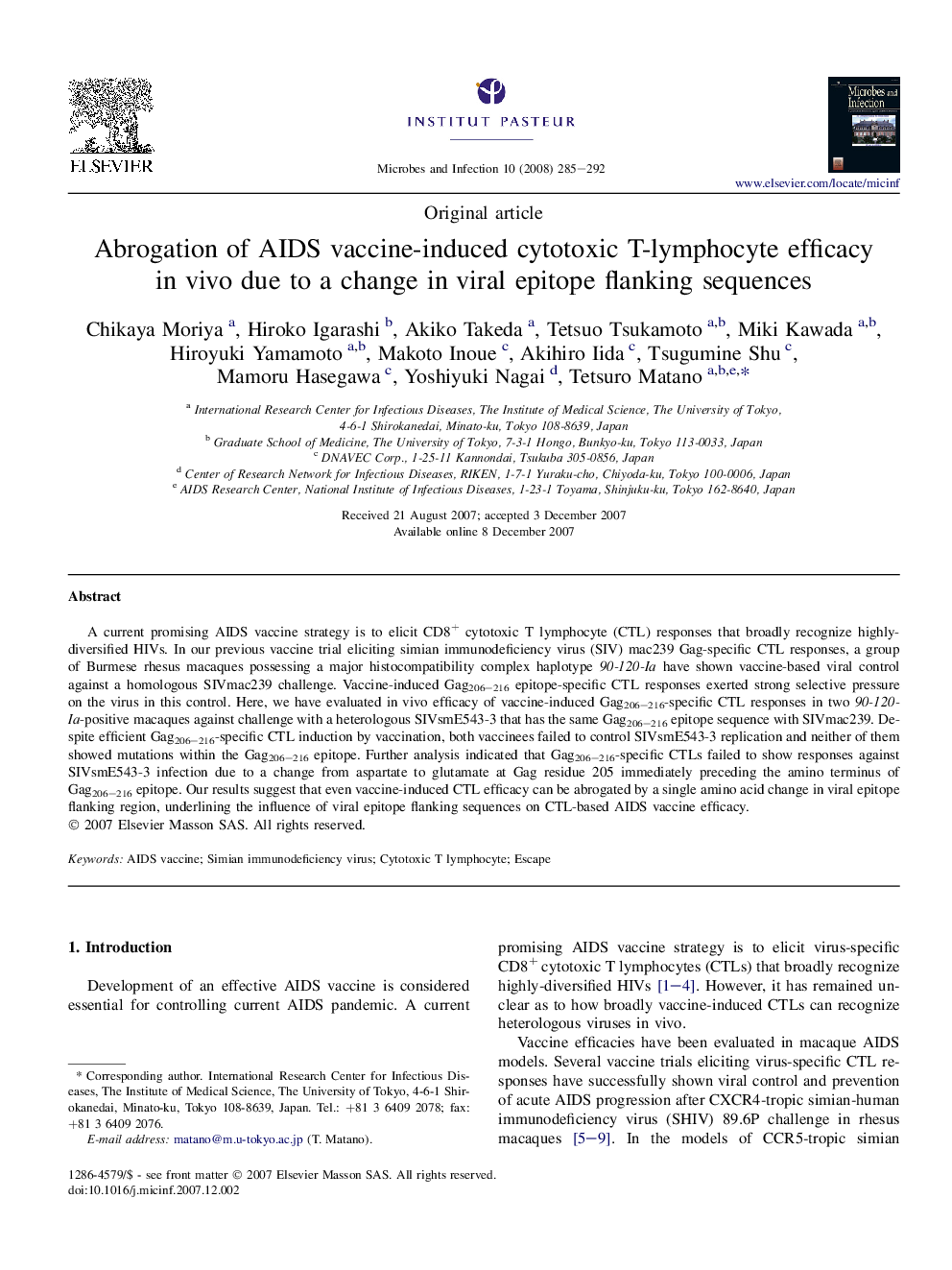| Article ID | Journal | Published Year | Pages | File Type |
|---|---|---|---|---|
| 3415361 | Microbes and Infection | 2008 | 8 Pages |
Abstract
A current promising AIDS vaccine strategy is to elicit CD8+ cytotoxic T lymphocyte (CTL) responses that broadly recognize highly-diversified HIVs. In our previous vaccine trial eliciting simian immunodeficiency virus (SIV) mac239 Gag-specific CTL responses, a group of Burmese rhesus macaques possessing a major histocompatibility complex haplotype 90-120-Ia have shown vaccine-based viral control against a homologous SIVmac239 challenge. Vaccine-induced Gag206-216 epitope-specific CTL responses exerted strong selective pressure on the virus in this control. Here, we have evaluated in vivo efficacy of vaccine-induced Gag206-216-specific CTL responses in two 90-120-Ia-positive macaques against challenge with a heterologous SIVsmE543-3 that has the same Gag206-216 epitope sequence with SIVmac239. Despite efficient Gag206-216-specific CTL induction by vaccination, both vaccinees failed to control SIVsmE543-3 replication and neither of them showed mutations within the Gag206-216 epitope. Further analysis indicated that Gag206-216-specific CTLs failed to show responses against SIVsmE543-3 infection due to a change from aspartate to glutamate at Gag residue 205 immediately preceding the amino terminus of Gag206-216 epitope. Our results suggest that even vaccine-induced CTL efficacy can be abrogated by a single amino acid change in viral epitope flanking region, underlining the influence of viral epitope flanking sequences on CTL-based AIDS vaccine efficacy.
Related Topics
Life Sciences
Immunology and Microbiology
Immunology
Authors
Chikaya Moriya, Hiroko Igarashi, Akiko Takeda, Tetsuo Tsukamoto, Miki Kawada, Hiroyuki Yamamoto, Makoto Inoue, Akihiro Iida, Tsugumine Shu, Mamoru Hasegawa, Yoshiyuki Nagai, Tetsuro Matano,
